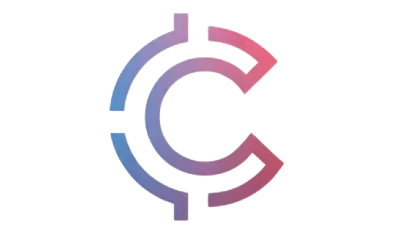Key Concepts of Blockchain Technology Every Beginner Should Know
Blockchain technology has become a buzzword in recent years, with applications far beyond cryptocurrency. Whether you’re just starting to explore the world of blockchain or you’ve heard the term but aren’t quite sure what it means, you’re in the right place. In this article, we’ll break down the essential concepts behind blockchain technology in simple terms, so you can get a solid understanding of what it is and how it works.
What is Blockchain?
At the core of everything, blockchain is a decentralized digital ledger used to record transactions across a network of computers. A “block” is a group of transactions that are recorded and stored on the blockchain. These blocks are linked together, forming a chain (hence the name “blockchain”). Blockchain technology is transparent, secure, and nearly impossible to alter once information has been added, which makes it perfect for recording and verifying transactions.
While blockchain technology is most often associated with cryptocurrencies like Bitcoin, it has many other applications across various industries. But before diving deeper into those uses, it’s essential to understand some key blockchain concepts.
1. Block
A block is the basic unit of blockchain. Think of it like a page in a ledger book. A block contains a list of transactions and other essential data, like timestamps and digital signatures. Once a block is filled with transactions, it is added to the chain, becoming part of the permanent ledger.
Every block in the chain is connected to the previous block through a special code called a hash, which makes it difficult to alter or tamper with the data in any block once it’s added to the blockchain.
2. Decentralization
One of the defining features of blockchain technology is decentralization. Traditional systems (like banks or governments) usually have a central authority that controls the flow of information. Blockchain, on the other hand, operates in a decentralized manner, meaning no single entity or organization controls the data. Instead, the blockchain is maintained by a distributed network of computers, called nodes.
Because of this decentralization, blockchain systems are much less vulnerable to attacks or failures, as no single point of failure exists. Every participant in the network has a copy of the ledger, and updates to the blockchain require consensus from the majority of the participants.
3. Distributed Ledger
A distributed ledger is a database that exists across multiple locations or institutions, rather than being stored in a single central location. Blockchain is a type of distributed ledger, meaning that copies of the same blockchain are stored on many different computers (nodes) across the world. Every time a new block is added to the blockchain, all the nodes in the network are updated to reflect the change.
This ensures that all participants in the blockchain network have the same information at all times, and it is a key feature that makes blockchain technology so secure and reliable.
4. Consensus Mechanisms
To ensure that all participants in the network agree on the content of the blockchain, blockchain networks use consensus mechanisms. These are protocols that determine how nodes in the network agree on the validity of transactions and blocks. The two most common consensus mechanisms are:
Proof of Work (PoW)
Proof of Work is the consensus mechanism used by Bitcoin and many other cryptocurrencies. In this system, miners (specialized computers) compete to solve complex mathematical puzzles. The first miner to solve the puzzle gets to add the next block to the blockchain and is rewarded with cryptocurrency.
Proof of Work is energy-intensive but highly secure because it requires a large amount of computational power to alter the blockchain.
Proof of Stake (PoS)
In Proof of Stake, instead of miners solving puzzles, validators are selected to create new blocks based on the number of coins they hold and are willing to “stake” or lock up as collateral. The more cryptocurrency you stake, the higher your chances of being selected to validate transactions and add a block to the blockchain.
Proof of Stake is considered more energy-efficient than Proof of Work and is used by cryptocurrencies like Ethereum 2.0.
5. Hash
A hash is a unique string of characters generated by an algorithm, which represents the data within a block. Every block has its own unique hash, and it also contains the hash of the previous block. This creates a chain of blocks, where each block is cryptographically linked to the previous one.
The hash is an essential feature of blockchain because it ensures the integrity of the data. If someone tries to alter the information in a block, its hash will change, which would break the link to the following block and alert the network to the tampering attempt.
6. Mining
In blockchain networks that use Proof of Work (PoW), mining refers to the process of validating transactions and adding new blocks to the blockchain. Miners use powerful computers to solve complex mathematical puzzles, and the first one to solve the puzzle gets to add the new block and receive a reward (often in the form of cryptocurrency).
Mining is an essential part of blockchain because it maintains the integrity and security of the network. However, it is also resource-intensive, requiring significant computing power and energy.
7. Smart Contracts
Smart contracts are self-executing contracts where the terms of the agreement are written directly into code. Once certain conditions are met, the contract automatically executes itself without the need for intermediaries.
For example, imagine a scenario where you want to purchase a product online using cryptocurrency. A smart contract could be set up to ensure that the payment is only made once the seller ships the product. If the seller doesn’t ship the product within the agreed timeframe, the contract could automatically cancel the transaction.
Smart contracts are trustless, meaning you don’t need to trust a third party (like a bank or lawyer) to enforce the contract. Instead, the contract’s code is automatically enforced by the blockchain.
8. Public vs. Private Blockchain
There are two main types of blockchain:
Public Blockchain
A public blockchain is open to everyone. Anyone can join the network, view the transactions, and even participate in the consensus process. Bitcoin and Ethereum are examples of public blockchains. Public blockchains are transparent and decentralized, but they can also be slower due to the high volume of participants.
Private Blockchain
A private blockchain is restricted to a specific group of participants. Unlike public blockchains, only authorized individuals or entities can access the network, and the consensus process is controlled by a central authority. Private blockchains are faster and more scalable than public blockchains but lack the full decentralization of public blockchains.
9. Forks
A fork is a change or update to the blockchain protocol. It occurs when the community of blockchain users or developers decides to modify the blockchain’s rules. Forks can be categorized into two types:
Hard Fork
A hard fork is a radical change to the blockchain that is not backward-compatible. It creates a split in the blockchain, where one version of the blockchain follows the new rules, and another continues to follow the old rules. An example of a hard fork is the split between Bitcoin and Bitcoin Cash.
Soft Fork
A soft fork is a more minor update that is backward-compatible. With a soft fork, blocks that were previously considered valid become invalid, but older blocks still work with the new rules. An example of a soft fork is the Sewed upgrade to Bitcoin.
10. Wallets
A wallet is a software application that allows users to store and manage their cryptocurrency holdings. There are two main types of wallets:
Hot Wallets
Hot wallets are connected to the internet, making them easier to use but more vulnerable to hacking. Examples of hot wallets include online wallets, mobile apps, and desktop wallets.
Cold Wallets
Cold wallets are offline wallets that are much more secure but less convenient. Examples of cold wallets include hardware wallets and paper wallets.
Conclusion
Blockchain technology is full of exciting potential, and understanding its core concepts is the first step toward unlocking that potential. From blocks and decentralization to smart contracts and mining, these key concepts provide the foundation for understanding how blockchain works.
While blockchain may seem complicated at first, breaking it down into these digestible concepts helps make it much more accessible. As the technology continues to evolve, it’s important to stay informed about its applications and the future of blockchain innovation.





